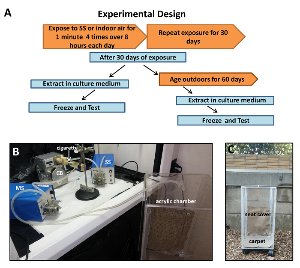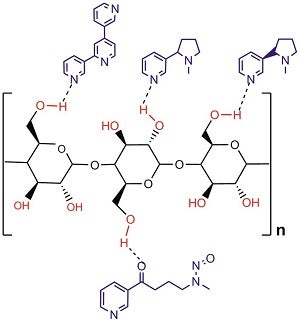Tobacco-Related Disease
We have investigated tobacco-related disease for a number of years. Our current work is focused on understanding the effects of sidestream smoke and thirdhand smoke on human health. Using several cell types, we are currently working with a “toxicology-in-a-dish” approach to gauge how chemicals in cigarette smoke affect various organ systems. This work includes using cells from the respiratory system cultured at an air-liquid interface to resemble their mode of exposure in vivo.
Selected Publications
Thirdhand Cigarette Smoke: Factors Affecting Exposure and Remediation
Bahl V, Jacob P 3rd, Havel C, Schick SF, Talbot P. PLoS One. 2014.
Thirdhand smoke (THS) refers to components of secondhand smoke that stick to indoor surfaces and persist in the environment. Little is known about exposure levels and possible remediation measures to reduce potential exposure in contaminated areas. This study deals with the effect of aging on THS components and evaluates possible exposure levels and remediation measures. We investigated the concentration of nicotine, five nicotine related alkaloids, and three tobacco specific nitrosamines (TSNAs) in smoke exposed fabrics. Two different extraction methods were used. Cotton terry cloth and polyester fleece were exposed to smoke in controlled laboratory conditions and aged before extraction. Liquid chromatography-tandem mass spectrometry was used for chemical analysis. Fabrics aged for 19 months after smoke exposure retained significant amounts of THS chemicals. During aqueous extraction, cotton cloth released about 41 times as much nicotine and about 78 times the amount of tobacco specific nitrosamines (TSNAs) as polyester after one hour of aqueous extraction. Concentrations of nicotine and TSNAs in extracts of terry cloth exposed to smoke were used to estimate infant/toddler oral exposure and adult dermal exposure to THS. Nicotine exposure from THS residue can be 6.8 times higher in toddlers and 24 times higher in adults and TSNA exposure can be 16 times higher in toddlers and 56 times higher in adults than what would be inhaled by a passive smoker. In addition to providing exposure estimates, our data could be useful in developing remediation strategies and in framing public health policies for indoor environments with THS.

